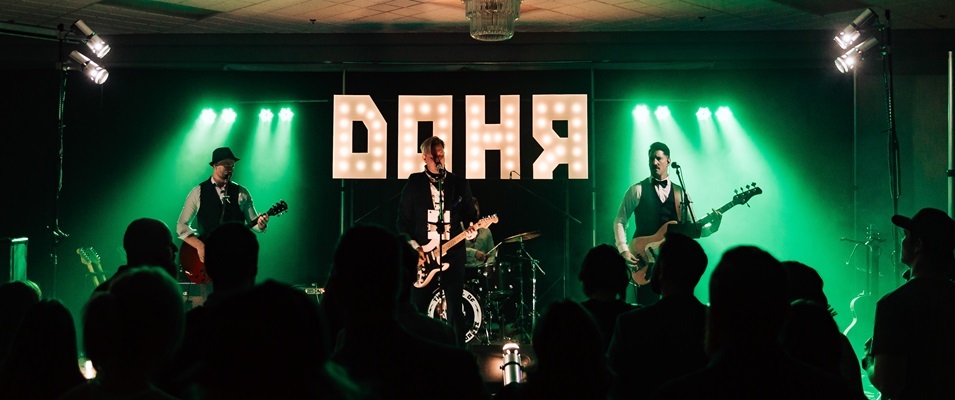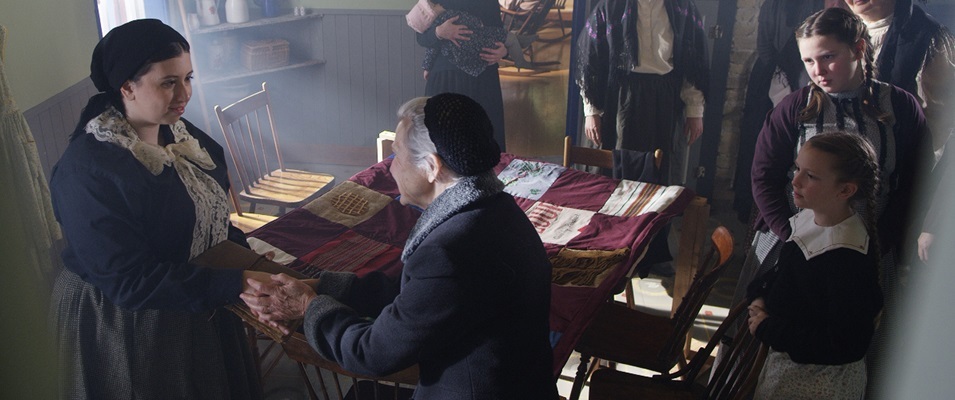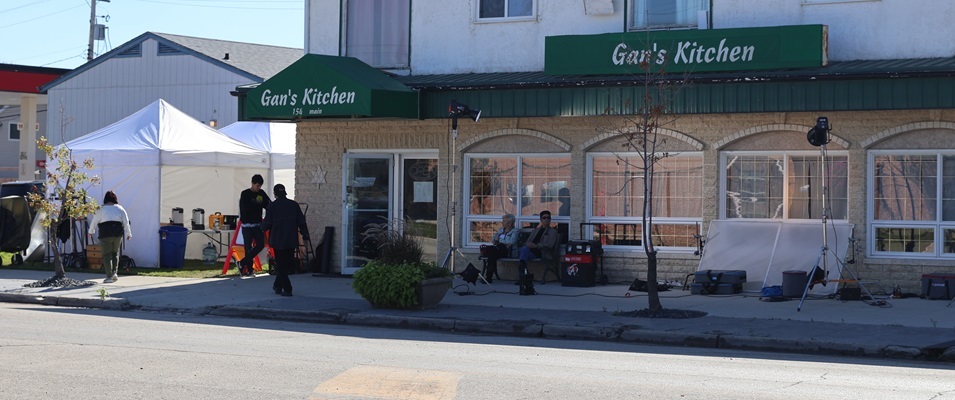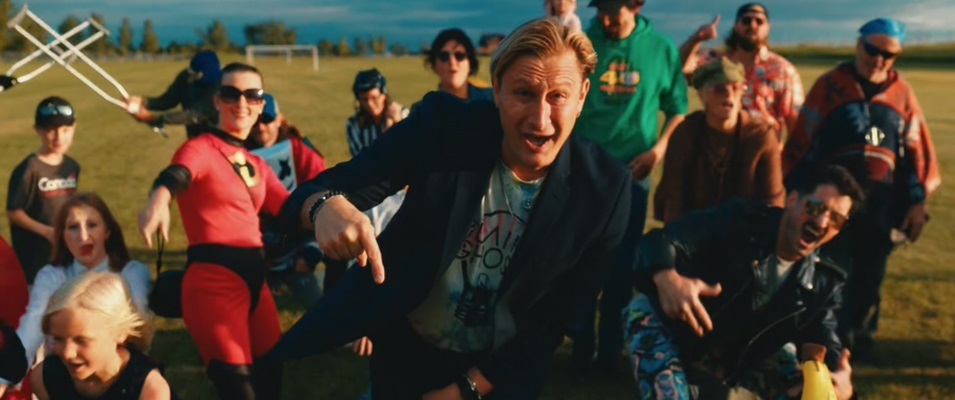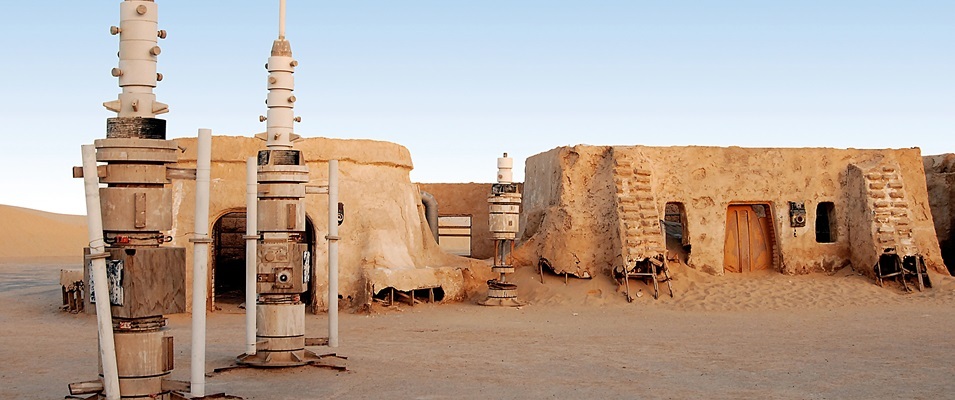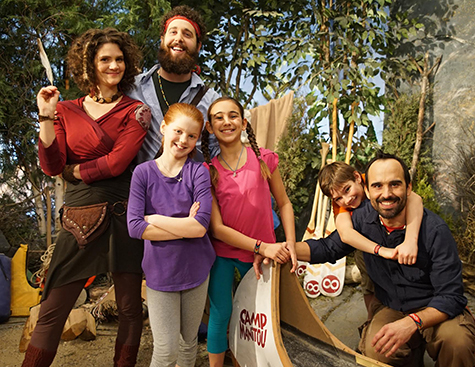
To the average pedestrian walking through Niverville, the former church on Third Avenue South may seem all but abandoned. But appearances can be deceiving. Since last November, the building has been home to a bustling television set.
When I tentatively stepped through the south entrance of the building one Friday morning in April, I didn’t know what to expect. The lights were low, but I could make out the silhouettes of people standing in the foyer, quiet as church mice, and a plethora of props, costumes, and shrubbery hung over nearby sawhorses.
Then a voice, cutting clear through the silence: “Coupez!”
My French may be rusty, but I could recognize a director’s authoritative “Cut!” in any language.
After a few introductions, the production manager showed me into the set. The former church sanctuary had been transformed into a lush campsite, complete with trees and grass, rocks, split logs, a canoe, and a tent. Behind the rocks and trees, a realistic blue sky presided over the campsite.
The show is called Canot Cocasse, a 13-part series that has been shooting since November and will wrap in May.
“It’s a French children’s television series,” says producer Charles Clément. “The word cocasse is loosely translated to ‘crazy.’ It’s a really cool word, very kid-friendly… I would say our targeted sweet spot is five- to seven-year-olds. It’s meant to be an educational series, a fun series, an adventure series. A series where the kids will have lots of fun, hopefully crack out a few laughs, and then also learn a bunch of things. Things about the natural word, the natural sciences, and also just basic life lessons—how to be perseverant, how to share, how to be patient, how to be generous, how to not leave your friends aside in a moment of euphoria or excitement.”
In the show, the kids are off at summer camp with their families. While there, they occasionally run off to find their aunt, who’s often flanked by a pair of stout, old-school voyageurs. Clément himself plays one of the voyageurs.
While principal photography is being shot in Niverville, the live-action footage will only account for about half of the show’s running time. That’s because Canot Cocasse is a hybrid series, with a mixture of live-action and animated content.
“In the 22-minute show, you have approximate five minutes at the start, which is live action,” Clément says. “Then [the characters] become the animated versions of themselves and they go off to learn about the world… so that at the end of that 10-minute animated adventure, they come back here in the live-action world.”
The animation is largely done by Loogaroo, a company in New Brunswick.
Clément likes to emphasize the educational value of the show, which he developed after watching Magic Schoolbus with his own kids.
“With immersion schools in Canada being as prominent as they are,” he says, “with so many thousands of kids across Canada taking French in immersion schools, this can hopefully be a tool that our broadcasters will use to reach out to those kids so that they have something fun to watch, to learn the language and re-enforce the teachings that they’re being taught at school.”
When the show airs in January 2017, it will appear on two main broadcasters: UnisTV, a mandatory specialty channel carried across the country, and APTN, the Aboriginal Peoples Television Network.
“I myself am a proud Metis French Canadian kid from St. Boniface, so our company is Aboriginal-owned,” says Clément. “We’ve worked on many different projects with the APTN over the years. Children’s series, documentary series, music and variety series. APTN is a great and valued partner of ours.”
Canot Cocasse is produced by Manito Media, a company owned by Clément’s brother Patrick. “He’s the main owner of the company. He’s my little brother, but he’s kind of my boss in a way. It’s a family affair, a family company.”
Some many rightly wonder what brought a production like this to Niverville. When I asked Clément how their cast and crew, up to 25 strong, ended up here, he smiled broadly.
“Why not Niverville?” he wonders aloud. “We were looking for a [space] that was big, but not too big. We were looking for a place that was completely available to us for the length of time that we needed it.”
He explains that many warehouse locations in Winnipeg want tenants to sign five-year leases, an untenable prospect for a project like this. But he also needed a building that would allow them to construct sets that could stand for months at a time, and accommodate short shooting days, since the young cast isn’t available to work long hours.
To avoid these problems, they set their sights on the outskirts of Winnipeg. “One of our crew knew someone who knew someone—you know Manitoba!—and here we were one day meeting with the representatives from the church,” Clément says. “They were extremely gracious. And when they heard about the good intentions of our show, they thought, well, what better way to help offset some of the hard costs of having this building empty?”
It helps that the commute is easy, with most of the crew living in the southeast corner of the city. And at least one crewmember is a long-time resident of Niverville.
“It’s worked out great so far,” Clément adds. “It’s been a great place to set up camp, so to speak, and the community and the building has afforded us everything we’ve needed.”
If the second season materializes, something he is busily trying to arrange, Clément says he would love nothing better than to come back to Niverville.








